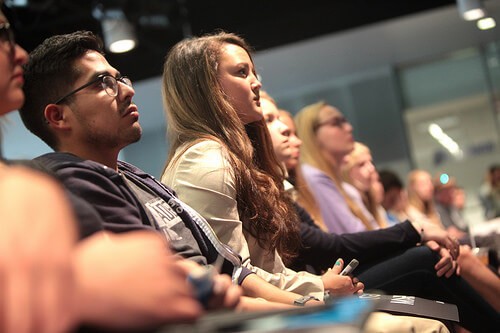
Summer is finally beginning to wind down. For most of us, this time of year simply means cooler weather and watching the leaves change color. But for thousands of college students across Colorado, the months of August and September mean the return of daily lectures, all-nighters spent writing papers, and, of course, driving to and from campus each day.
As students return to college campuses across the state this autumn, we will once again see a significant increase in the number of cars, bicycles, and pedestrians on and around our streets. This increase in traffic, combined with Colorado’s already hilly roads, brings an increased risk of traffic accidents. With this in mind, it’s a good idea to be aware of any increased traffic congestion in your area as well as some of the most common traffic accidents involving college-aged students in order to keep yourself and your family safe this fall.
How Do College Students Get to Campus?
University of Colorado – Boulder has around 32,700 students and the majority of these students live off campus (71% according to U.S. News & World Report). One survey showed that students at CU-Boulder typically use the following methods of travel to get to school each week:
- 32% ride a bus
- 25% drive a car
- 18% walk
- 14% bike
- 7% ride a motorcycle or scooter
- 2% carpool
- 1% skateboard
Faculty, on the other hand, are more likely to drive than students. The same survey found that 45% of faculty drive to campus, 28% ride a bus, 10% bike, and 7% carpool. Additionally, most students and faculty reported that they visit campus five days a week. Given the large number of college students returning to Colorado this fall, our streets and public transportation systems are sure to see an increase in use.
Traffic Accidents Involving College Students
Because college-aged students are less experienced than older drivers, their chances of being involved in traffic accidents are higher. Additionally, young drivers are more likely than their older counterparts to engage in risky behavior, such as drinking and driving, that can result in a serious accident. Whether driving, biking, skateboarding, or even just walking, college-aged students can be a risk to themselves and those around them when they engage in the following activities.
Impaired Driving or Biking
It’s no secret that for many students, college is a time of self-discovery, exploration, and limit testing. Students who are away from home for the first time are often tempted into making dangerous decisions, such as drinking and driving.
According to a U.S. News & World Report survey, one in five college students admitted to driving while drunk. Additionally, the study found that reports of drunk driving increased with students ages 21 and over, likely due to “greater opportunities for risk taking such as owning a car or the ability to patronize bars and purchase alcohol.”
Drowsy Driving
There’s a common saying that college students only have time for two of the following three activities: sleep, study, social life. It’s no surprise that sleep is prioritized last. Because many college students test their limits by staying up late to study and socialize with others, drowsy driving is a real possibility.
According to the National Sleep Foundation (NSF), people between the ages of 18 and 29 are much more likely to drive while drowsy compared to other age groups. The NSF also reported that most crashes or near misses caused by sleep deprivation occur between 4:00 a.m. and 6:00 a.m. Other peak times for accidents include midnight to 2:00 a.m. and 2:00 p.m. to 4:00 p.m. Nearly one-quarter of people (23%) say they personally know someone who has crashed after falling asleep behind the wheel, says the NSF.
Distracted Driving
With the increasing popularity of smart phones and other mobile devices, distracted driving is at an all-time high, especially among college students who have grown up in a culture of constant connection to the internet and social media. In 2014 alone, distracted driving caused 3,179 deaths and 431,000 injuries, says the U.S. Department of Transportation. Texting and driving is so dangerous because it has been shown that texting can alter brain waves. This is because texting requires an intense amount of focus from multiple regions of the brain.
In addition to texting and distraction from cell phones, college students may be distracted by other students in their car when traveling in groups. Even students walking around town may be a liability due to distraction. College students and adults alike often walk while texting or playing games like Pokémon Go on their phones rather than looking where they are going. Additionally, many students wear headphones while walking or biking to class which lowers their ability to hear oncoming traffic.
Stay Safe This Fall
Whether you are a student yourself or simply live in the vicinity of a college or university, stay safe this fall by staying alert and aware of your surroundings. Be on the lookout for drunken or distracted drivers. These drivers are likely to swerve out of their lanes or travel well under or over the posted speed limit. Remember to check your blind spots for pedestrians and bicyclists sharing the road. And as always, remember to buckle up.
If you are in a wreck that another driver caused, call the Law Offices of Dianne Sawaya, LLC. We’ll review your case and help you file a claim to get compensation for your damages.

